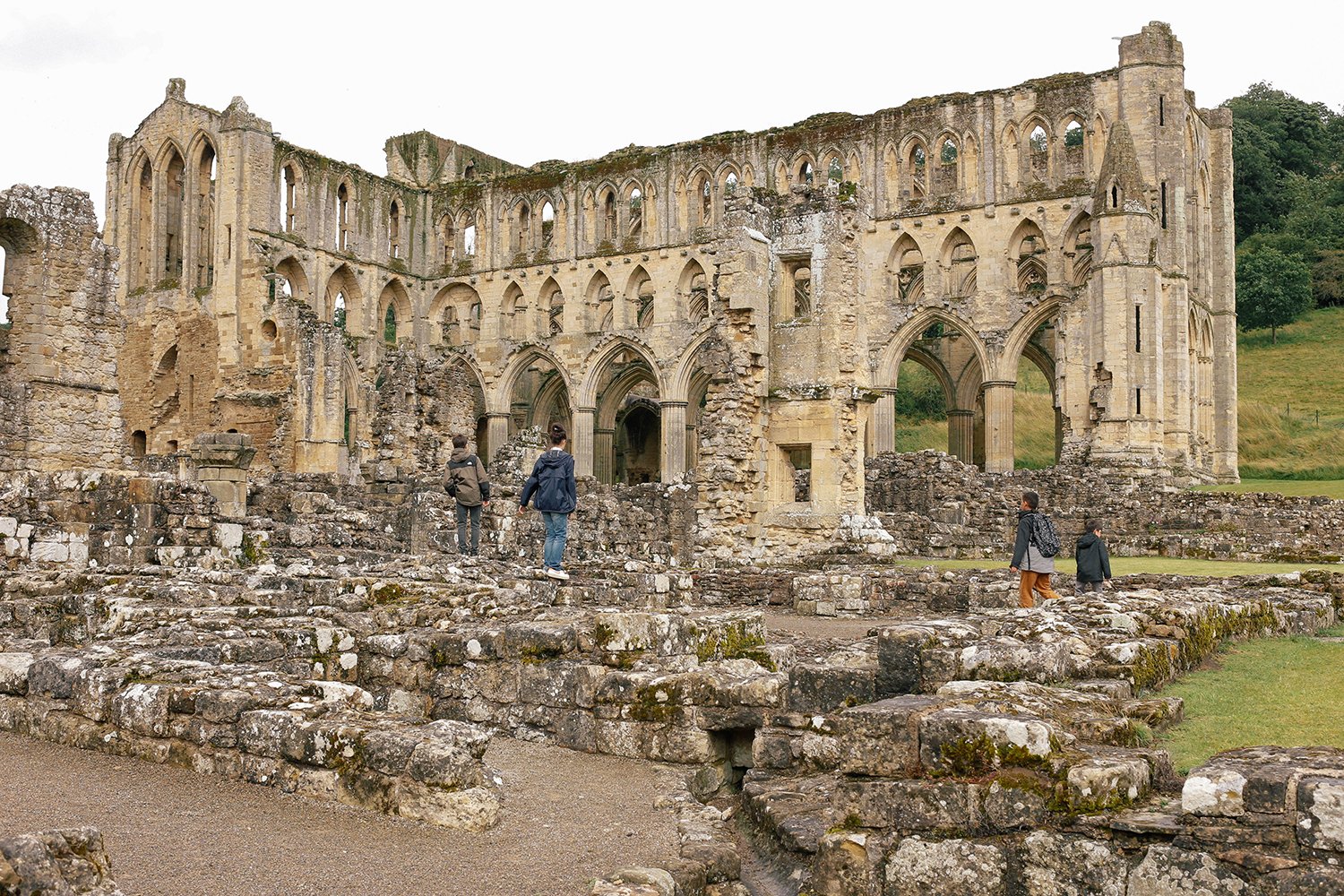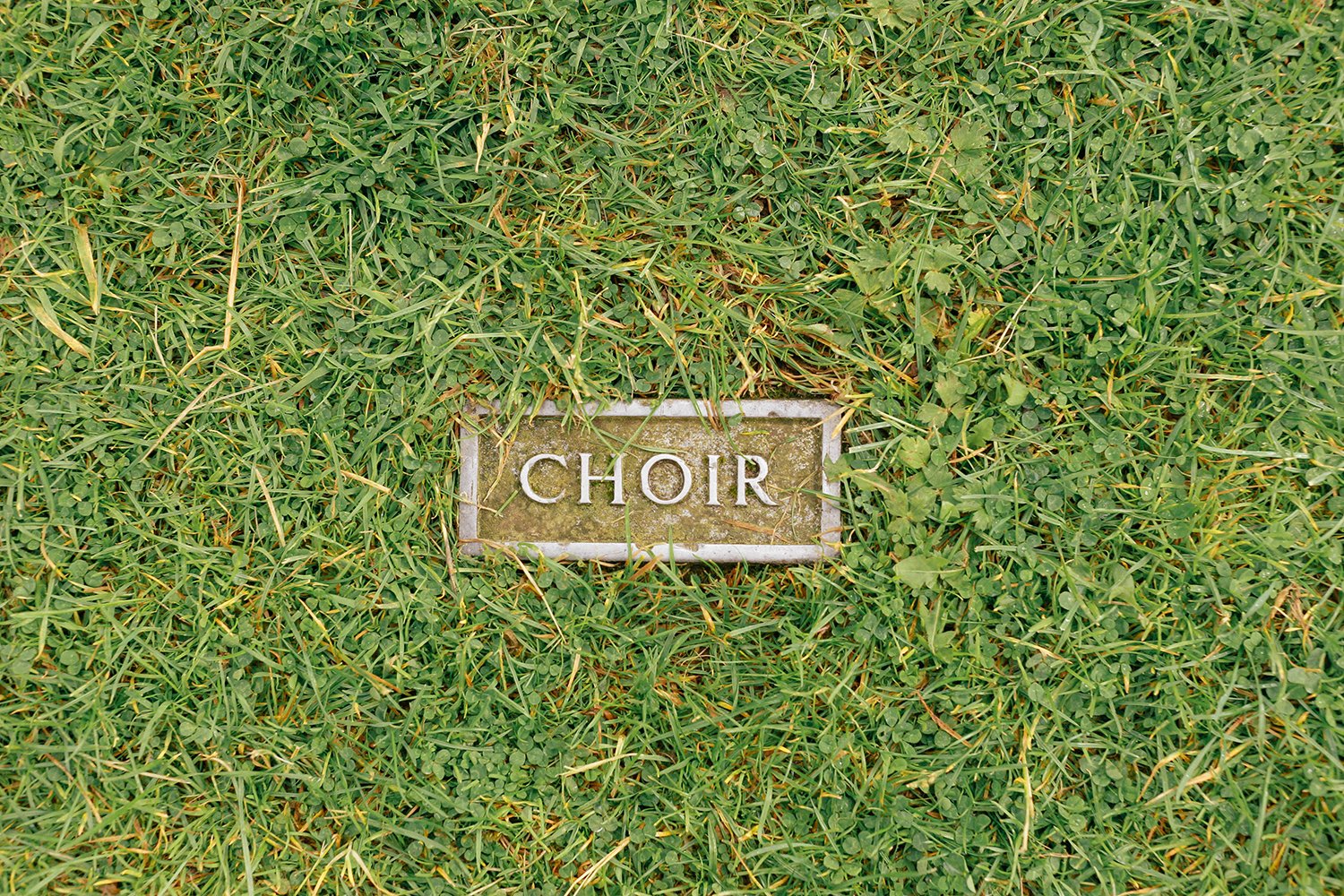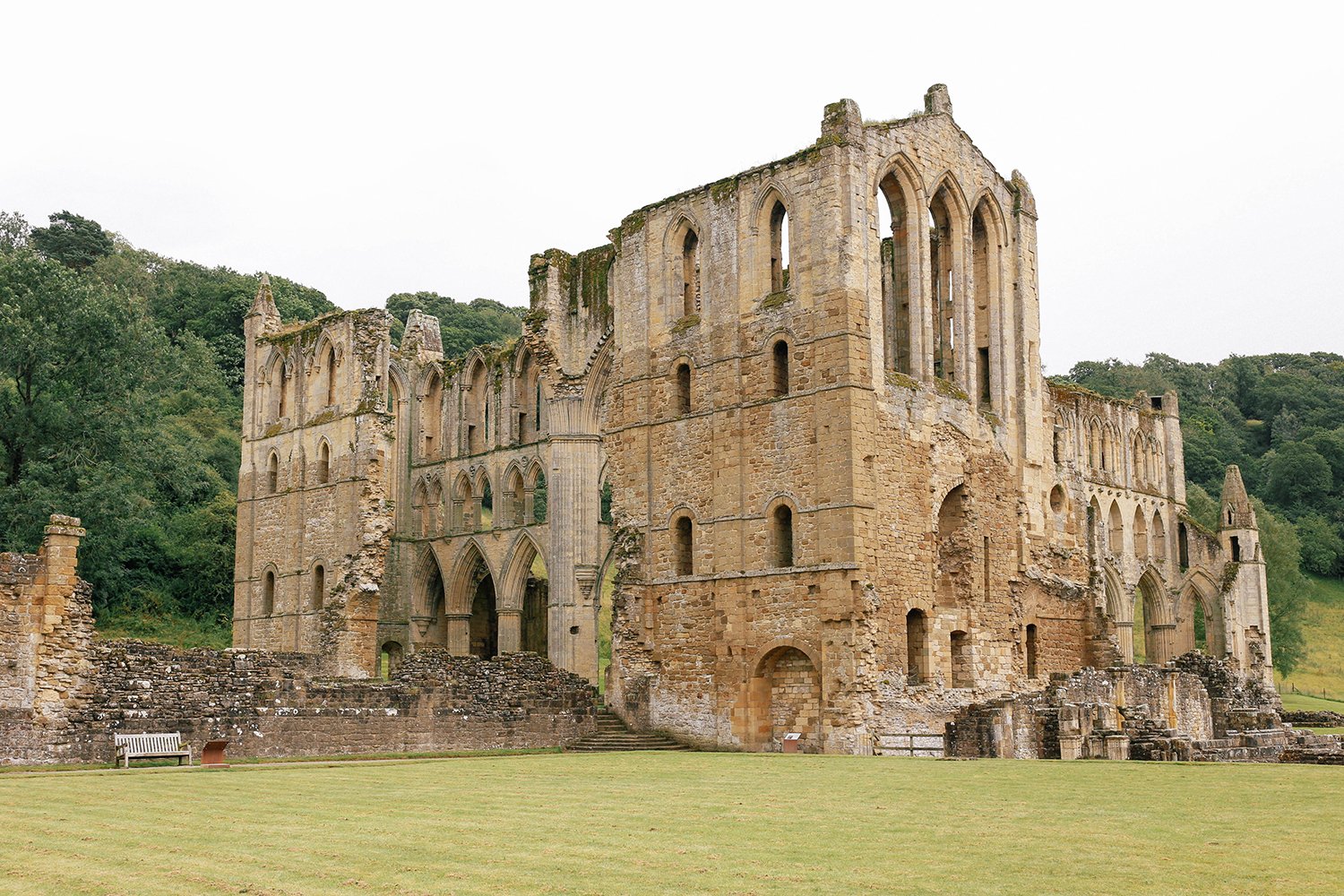A day in ruins
More from this summer. It was so different in many ways, but the main one was that Mr Famapa worked away for most of it, leaving me and Oomoo to our own devices for weeks on end. To break it up me and O drove up to York to go and stay with friends for a few nights. The weather was all over the place (mainly on the wet side) but I had a few places I wanted to go visit.
The Kilburn White Horse was one of them, and this is the best picture I got of it. Not only can you not see the horse, it’s also not white. There’s quite a story about it; a wealthy Victorian business man had been to see the chalk hill Uffington White Horse in Oxfordshire, and wanted to create something similar near the village he grew up in. The local schoolmaster, together with his pupils and volunteers, set about to cut the horse out of the hill, but as it wasn’t made out of chalk, the horse did not end up having the desired white colour. Tons of limestone was instead poured over it to have the same effect, something that has been done regularly ever since. Well, it had obviously not been done for a long time when we were there, so if anything it could probably be re-branded to a more accurate name like “The Greige Horse”.
Walking up the steps up to it (and down like here) was quite an experience. They went on forever and were ridiculously steep. Quite a workout!
From there we continued to Helmsley for a spot of lunch, and walked past this ruin of Helmsley Castle.
Twice.
We didn’t stop as we had a bigger ruin on our itinerary: Rievaulx Abbey. In the depths of the third lockdown I savoured watching Winter Walks, where you got to follow various people in the public eye go for a solo walk in Yorkshire and Cumbria, accompanied only by a 360 degree camera they were filming with themselves with, and a drone. This blogpost describes exactly what it felt like for me to watch these beautiful, soulful programmes in the bleakest of winters (let’s hope this coming one won’t be as bad, because the last one was ROUGH here), and the programmes proved handy with lots of suggestions of what to explore in Yorkshire.
Rievaulx Abbey did not disappoint.
A Cistercian monastery since 1132 (!), this extension of the cloisters was completed in the 1220’s. At its most populous point around 650 people lived there, with the minority being monks, and the majority lay brothers.
Shut down by Henry the VIII in 1538, it was quickly dismantled, with the roof lead and church bells saved for the king.
It didn’t occur to me that maybe it was a bit unsafe to walk around like we did, but the upper walls were reinforced with hidden concrete beams in 1918, to preserve the ruins for the future.
Dotted around in the grass were signs showing where different areas used to be.
Must be quite something to live so close, in these houses, right next to it.
After the dissolution of the abbey, it continued on as an iron forge, which already existed, as the lay brothers at Rievaulx forged their own tools, nails and cutlery. Eventually it too got closed down, and the land was handed down generations of landed gentry, and finally given to the state as a historical monument in the 1900’s.
Lastly, in the grounds café afterwards, in a really well designed seating area. Those windows!
I’m so glad we’re finally exploring England more (and I hope we get to travel round the rest of the UK soon too), as in the ‘Before’ we usually went abroad for our holidays. I always knew that there are so many amazing places to visit here, and it’s crazy that it took a pandemic to make us appreciate what’s closer to home. But I guess sometimes you have to learn the hard way.













